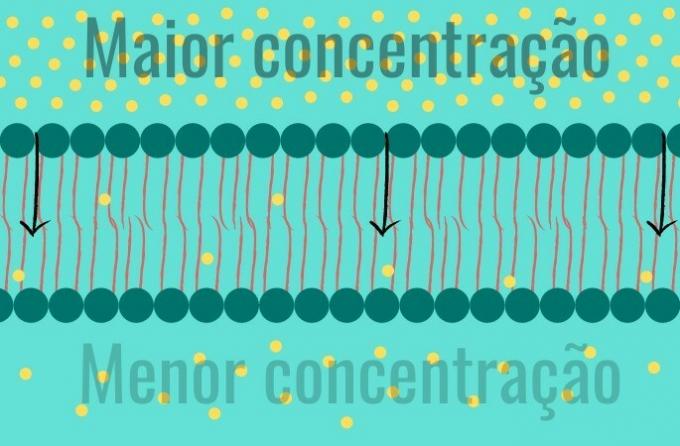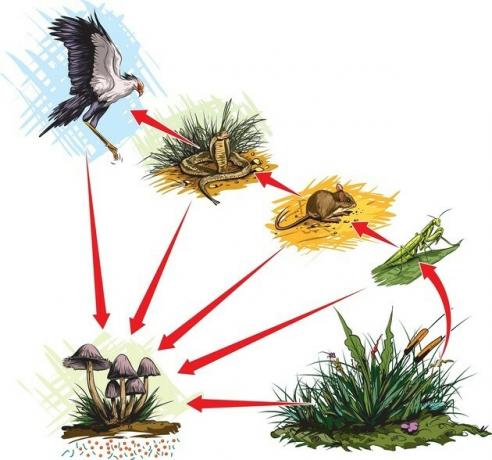Simple diffusion is a mode of passive transport of substances across the cell membrane, from the most concentrated medium to the lowest concentration of the substance. In facilitated diffusion, the same process occurs, however, there is the help of permeases for the entry of the substance into the cells.
Permeases are proteins that act as carriers to transport substances into cells. Therefore, it is called "facilitated diffusion", permeases facilitate this diffusion process.
Passive transport differs from active transport because there is nothing to move the substances, therefore, there is no expenditure of metabolic energy for this movement.
| Simple Broadcast | Facilitated Diffusion | |
|---|---|---|
| What is it | Passive transport of substances across the cell membrane. | Passive transport of substances across the cell membrane facilitated by the help of permeases. |
| Movement | From the area of highest concentration to the area of lowest concentration. | From the area of highest concentration to the area of lowest concentration. |
| diffusion speed | Lower speed. Dependent on the level of concentration. The greater the concentration difference, the greater the diffusion speed. | Higher speed. Dependent on the amount of permeases. The greater the number of carriers, the greater the diffusion speed. |
| Diffusion-aid proteins | There is not. | Amino acids and glucose. |
Another passive transport process is osmosis. In osmosis, in general, water moves from a hypotonic to a hypertonic environment.
What is simple diffusion?
Simple diffusion is the process of passive transport of substances across the cell membrane. In this process, the concentration levels are responsible for the speed of the reaction.

Unlike facilitated diffusion, in this process, there is no help from proteins to transport substances. Thus, the molecules are transported "naturally", through the permeability of the cellular membrane, seeking the balance between the exterior and interior concentration.
Thus, the speed tends to be lower in relation to facilitated diffusion, as it will depend on the concentration levels of the substance to be transported. Greater concentration, greater disequilibrium, greater speed of diffusion.
What is facilitated diffusion?

Facilitated diffusion occurs when there is a protein that helps the substance pass through the cell membrane. These carriers of substances are called permeases.
Permeases are, in general, glucose or amino acids, capable of selecting and transporting substances across the membrane.
Unlike active transport, where this transport is carried out using energy (ATP), facilitated diffusion remains passive transport.
However, by the action of permeases, the diffusion speed is increased, not depending on the concentration gradient.
Permeases facilitate the diffusion process, increasing its speed up to the saturation point, where these molecules are all occupied in this function.
Osmosis
There is also a third type of passive transport, osmosis. It occurs through the passage of a solvent - in general, water - from one medium to another.
In this process, water is transported across the semipermeable membrane from a less concentrated (hypotonic) medium to a more concentrated (hypertonic) medium.
This is what happens to the exchange of nutrients in animal and plant cells, for example, in the process carried out by the roots of plants.
See also the difference between:
- Animal cell and plant cell
- Prokaryotic cells and eukaryotic cells
- Diploid and haploid cells
- Mitosis and Meiosis



